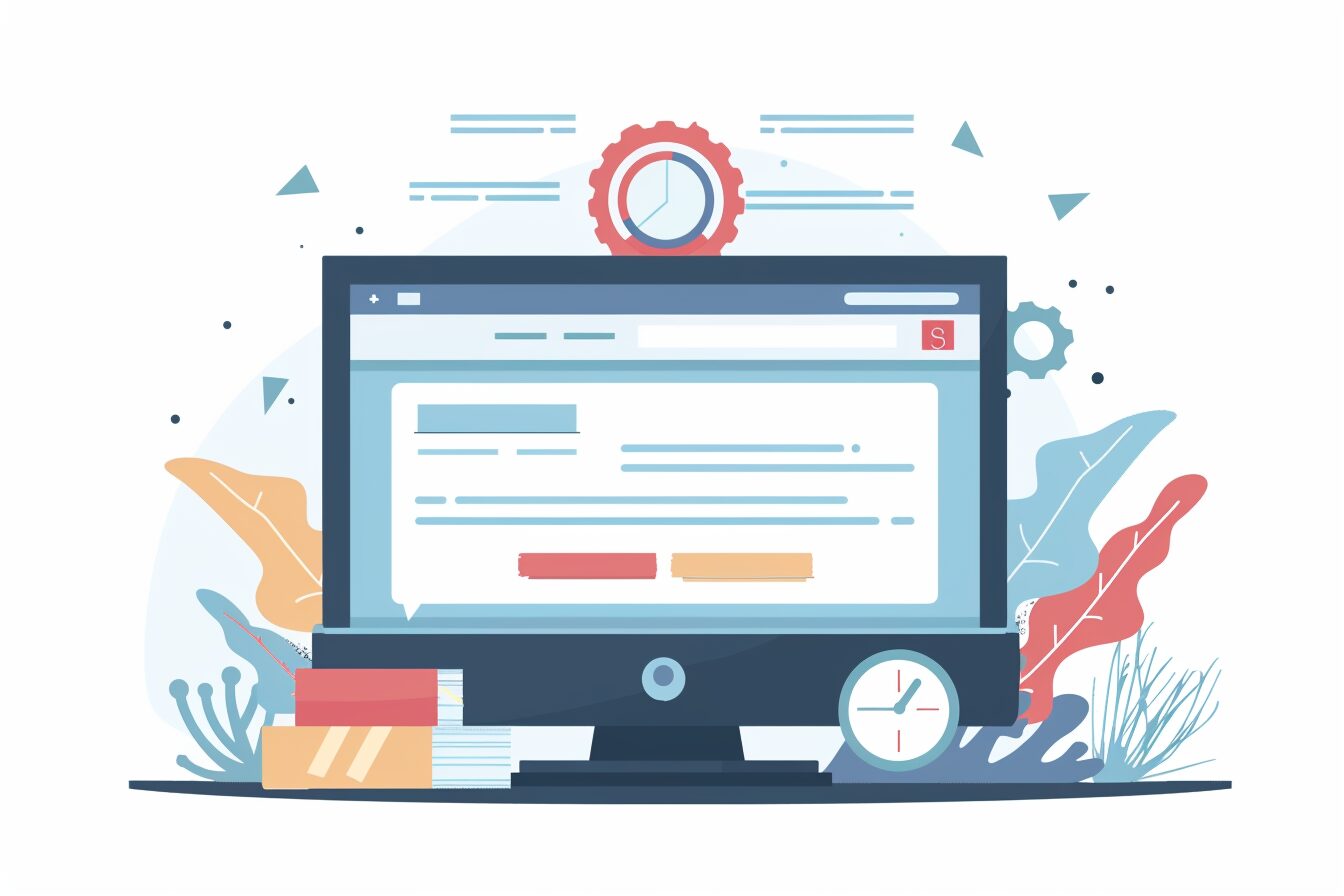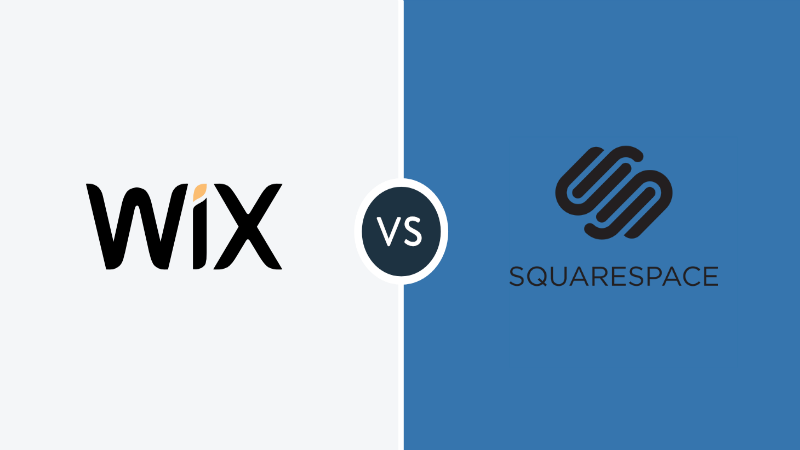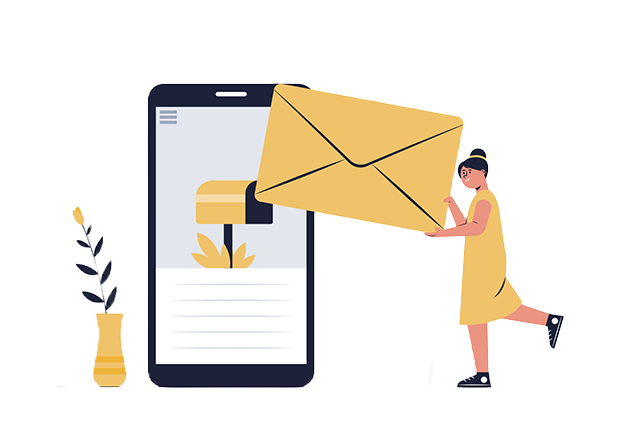Artificial intelligence (AI) has become a game-changer for small and medium-sized businesses (SMBs). In 2025, tools once reserved for big corporations are accessible to everyone – from AI chatbots that handle customer inquiries to “copilot” assistants that write code or content. Savvy SMB owners are tapping these AI agents to do more with less. In fact, 80% of small business owners who use AI report increased efficiency and productivity, and a majority say AI helps them save significant time and money each month. The bottom line? AI isn’t just hype – it’s a practical ally that can streamline operations, cut costs, and free up your team for the work that matters most.
Before diving into the how-to, let’s clarify what we mean by “AI agents.” An AI agent can be any smart tool or assistant powered by artificial intelligence that performs tasks or makes decisions on your behalf. This includes everything from customer-facing chatbots and voice assistants, to behind-the-scenes process automation bots, to AI “copilots” that assist with coding or content creation. These tools use machine learning and large datasets to carry out tasks intelligently – often much faster (and at scale) compared to doing the same work manually.
Small businesses in 2025 are using AI agents in a variety of impactful ways: to answer customer questions 24/7, generate marketing content in seconds, design websites, write computer code, and even handle routine administrative chores. Let’s explore the key benefits and use cases in detail.
Key Benefits of AI Agents for Small Businesses
- Time Savings: AI automates repetitive tasks and speeds up workflows. Many owners say AI tools save them 10–40+ hours per month on average by taking over busywork like scheduling, data entry, or basic customer interactions. This gives you back precious time to focus on strategy and growth.
- Improved Customer Service: AI chatbots and virtual assistants can handle common customer inquiries instantly, 24/7. This means faster responses and help for your customers at any hour, improving satisfaction. Complex issues can still be handed off to your human team, but AI covers the simple questions so your staff aren’t tied up answering FAQs.
- Reduced Costs: By “hiring” inexpensive AI assistants to do work, small businesses are cutting expenses. One survey found 57% of AI-using small businesses save $500–$2,000 a month as a direct result of using AI. You can scale output without proportionally scaling payroll. For example, instead of adding another employee to draft emails or monitor a website, an AI tool might handle it at a fraction of the cost.
- Higher Productivity & Output: AI agents enable a “do more with less” approach. In practice, that means a small team can produce content, write code, or serve customers at a volume that might normally require a much larger staff. In fact, 97% of business owners using AI feel it makes their business more efficient, and 91% say it helps them operate at a level similar to bigger companies. AI essentially levels the playing field.
- Better Quality and Consistency: AI isn’t just faster – it can also provide data-driven insights and consistency. For instance, an AI writing assistant can ensure your blog posts always include relevant keywords for SEO, and an AI analytics tool might catch errors or optimization opportunities that humans miss. Over time, these agents “learn” from data, which can lead to continuous improvements in how your business operates.
Now, let’s break down some of the most powerful ways you can deploy AI agents across your business workflow in 2025, with specific examples and tools.
1. Enhancing Customer Service with AI Chatbots and Virtual Assistants
One of the first areas many small businesses invest in AI is customer service. Providing prompt, helpful responses to customers’ questions can be labor-intensive – especially outside normal business hours. AI-powered chatbots fill this gap by acting as virtual customer service reps who never sleep.
Modern AI chatbots (think of services like Intercom’s Fin, Drift, or those built on GPT-4) can understand natural language questions and provide relevant answers from a knowledge base. They can be installed on your website, in your mobile app, or on social media messaging channels. For example, a visitor to your site might ask, “Do you ship internationally?” and the chatbot can instantly reply with the correct information. This frees your team from answering the same question for the hundredth time.
Key advantages of AI chatbots for SMBs include:
- 24/7 Instant Responses: Unlike a human team, a bot is always available. Customers get help at 11pm on a Sunday just as easily as 11am on a Monday. This round-the-clock service boosts customer satisfaction and trust, as people aren’t kept waiting.
- Handling Common Inquiries: Chatbots excel at addressing frequently asked questions (shipping policies, appointment availability, order status, etc.). They can resolve issues like order tracking or basic troubleshooting without any human intervention. Some estimates show that well-designed bots can manage up to 80–90% of routine customer questions, depending on the industry, leaving only the more complicated cases for your staff.
- Cost-Effective Scaling: Serving more customers no longer means linearly hiring more support agents. AI assistants can simultaneously chat with dozens of customers. As your business grows, an AI bot can handle increased volume at minimal additional cost (maybe a higher-tier subscription), whereas scaling a call center or support team could be far pricier.
- Personalized Experience: Today’s AI agents can integrate with your customer databases or CRM. This means the chatbot isn’t giving generic answers only. It can greet a customer by name, refer to their past orders, or tailor product recommendations based on browsing history. Essentially, you get a concierge-level experience, automated.
Even small businesses have success stories with chatbots. For example, a luxury haircare brand implemented an AI chatbot to engage website visitors in a personalized quiz and recommend products. The result? It tripled conversion rates for users who interacted with the bot. By guiding shoppers in a friendly, interactive way, the chatbot not only handled queries but actively boosted sales.
Real-world example: Rossano Ferretti, a boutique haircare company, used an AI chatbot to run a “find your perfect product” quiz for visitors. The bot asked questions about hair type and needs, then suggested suitable products. This interactive assistant dramatically increased customer engagement — those who used the chatbot were three times more likely to make a purchase, significantly lifting conversion rates.
Beyond text chatbots, voice-based AI assistants are also an option. Think of how many people use Siri, Alexa, or Google Assistant for quick questions – businesses are now embedding similar voice Q&A into their phone lines or apps. For instance, a small retail store might have an AI-driven phone menu that lets customers simply say what they need (e.g. “What are your hours today?”) and the AI assistant will answer. It’s all about reducing friction and responding faster.
Finally, AI customer service isn’t limited to answering questions – it can proactively engage customers too. Some businesses use AI to send personalized follow-ups or offers via chat or email, triggered by customer behavior. For example, if someone’s browsing your pricing page, an AI chat agent can pop up to ask if they have questions about plans, possibly increasing your lead conversion.
The takeaway: Implementing an AI chatbot or virtual assistant can dramatically improve your customer service efficiency. You’ll provide quick, accurate service to more people without hiring a large support team. Your human employees will thank you too, as they can focus on higher-value conversations instead of answering “Where’s my order?” all day. As a bonus, better customer service often leads to higher sales and loyalty, so the ROI of an AI chatbot can be substantial.
2. Automating Routine Tasks and Office Workflows with AI
Another huge efficiency boost for small businesses comes from AI automation of routine tasks. Every business, no matter the size, has a share of mundane but necessary processes – think scheduling appointments, sending reminders, data entry, updating spreadsheets, sorting emails, generating reports, and so on. In 2025, AI “agents” excel at offloading these tedious tasks so that you and your team can concentrate on core business activities.
“Smart” scheduling assistants are a perfect example. Coordinating meetings or appointments can involve a lot of back-and-forth emails (“Does Tuesday 3pm work? No? How about Wednesday morning?”). AI scheduling tools eliminate this hassle. They can check calendars, find open slots, handle time zone conversions, and even send out invites – all automatically. Services like Calendly, Motion, or Google’s AI Scheduler have this capability. Atlassian (the company behind Trello and Jira) reported that after adopting automated scheduling, they cut out scheduling email chains and saved about 10–15 minutes per meeting booked, while also reducing no-shows due to better reminders. Those minutes add up quickly across dozens of meetings, translating to hours saved every week.
Common administrative and operational tasks that AI can automate for SMBs include:
- Calendar Management: AI assistants (like Motion or Reclaim.ai) learn your preferences (e.g. you like meetings in the morning, or avoid Fridays) and auto-schedule accordingly. They send meeting invites, adjust for all participants’ time zones, and can reschedule if conflicts arise – without you lifting a finger.
- Email Drafting and Sorting: Tools like Microsoft 365 Copilot or various AI email assistants can draft responses for you by analyzing the email you received. If you get a typical client inquiry, the AI might generate a polite, detailed reply ready for you to tweak and send. These assistants can also sort your inbox, prioritize urgent messages, or summarize long emails. In 2025, the best AI email assistants claim to handle a large chunk of your inbox triage, saving hours per week in email time.
- Data Entry and CRM Updates: Instead of manually updating spreadsheets or CRM records, AI can do it. For example, if you receive forms or invoices by email, an AI tool can extract the key info and input it into your database. QuickBooks and Xero (accounting software popular with SMBs) now have AI features that automatically categorize expenses or reconcile transactions based on learned patterns. This reduces human error and drudgery in bookkeeping.
- Generating Reports and Insights: Need a sales report for last month or an analysis of website traffic? AI business intelligence tools can generate reports with natural language summaries. Rather than you poring over Excel, you can ask an AI tool (even via a chat interface) questions about your data and get instant answers or charts. For instance, ChatGPT’s data analysis plugins or Google’s Looker Studio with AI can interpret your data and highlight trends. This means faster decisions and less waiting on an analyst to crunch numbers.
- Routine Communications: Many businesses use AI to automatically send out reminders, follow-ups, or feedback requests. A great example from a small business: Jarvis Electric, an electrical services company, set up an AI-driven system to send automatic appointment reminders and post-service follow-up emails to customers. By automating these communications, they saved employees time (no more manual calling or emailing every customer) and actually improved customer relations, since clients received timely, consistent updates. The result was fewer no-shows and a stronger professional impression of reliability.
Imagine having a tireless junior assistant who handles all the “busy work” – that’s essentially what these AI agents offer. A recent survey found 69% of small-business owners are leveraging AI to automate back-office and administrative processes, and 73% agree that AI effectively “offloads repetitive tasks” like appointment scheduling and data management. The sentiment is clear: business owners would rather have AI handle the drudge work, so they and their teams can focus on creative, strategic, or revenue-generating tasks.
Pro tip: Start by identifying one or two time-consuming tasks that eat up your day. It might be scheduling, as above, or maybe creating weekly reports. Look for an AI tool specific to that need – for instance, an AI scheduling assistant or an AI reporting tool that connects to your systems. Implement it on a trial basis and measure the time saved. Many AI tools have free tiers or trials, so you can experiment with minimal investment. Once you see results (hours saved, fewer errors, etc.), you’ll be motivated to automate more.
By automating routine tasks, you not only save time but also standardize your operations. Things don’t slip through the cracks because the AI doesn’t forget or get busy. Small businesses using AI report being able to function like much larger organizations – one business owner put it that AI “levels the playing field and supercharges human tasks”. In practice, this might mean your tiny team of 5 people can accomplish the output of what 15 people might have done a few years ago, thanks to well-deployed automation. That’s a competitive edge that can translate into faster growth and better service.
3. AI in Web Design: Building and Optimizing Websites Faster
Building a professional, effective website is crucial for businesses of any size – but small businesses often face budget or skill constraints in web design. Here’s more good news: AI is revolutionizing web design, making it more efficient and accessible. In 2025, even non-technical entrepreneurs can leverage AI-powered tools to create and maintain great websites with less effort.
AI website builders and design assistants have matured to the point where they can handle a lot of the heavy lifting in creating a site’s layout, style, and even content. For example, services like Wix ADI (Artificial Design Intelligence) and Jimdo Dolphin allow you to generate a website by simply answering a few questions about your business. The AI will suggest a design template, auto-generate some copy (which you can tweak), and even select relevant images. It’s like having a basic web designer on call – one that can produce a draft site in minutes. This significantly lowers the bar for getting an initial site up and running.
For those with an eye for design or who want more control, AI still speeds up the workflow. Consider a web designer or small business owner using Webflow’s AI tools or Adobe Sensei within design software: these can automate tasks like resizing images for different screen sizes, generating color palettes or mockups from a simple prompt, and even suggesting layout improvements. AI can quickly spit out multiple design variations for a landing page, for instance, based on best practices – you then pick the one you like and refine it. Repetitive chores like creating responsive versions of a site or compressing images for speed can be handled automatically, which saves a ton of time.
Here are a few practical applications of AI in web design that benefit SMBs:
- Instant Site Generation: As mentioned, tools like Wix’s ADI or Hostinger’s AI Website Builder can create a rough but working website or homepage for you in a matter of minutes. You input your industry and some preferences, and the AI produces a tailored design. This is great for prototypes or getting online fast. You can always customize the output, but not starting from a blank canvas is a huge time-saver.
- Automated Design Suggestions: AI can analyze what designs work well in your industry. For instance, if you run a boutique hotel, an AI design tool might know that similar businesses often feature a large image carousel and a booking call-to-action at top. It will make sure those elements are in your draft site. Some AI tools even use heatmap predictions (based on data of user behavior) to recommend placing important buttons or content in certain spots for better conversion. Essentially, you’re getting data-driven UX advice without paying a UX consultant.
- Content Generation for Websites: Not a copywriter? AI’s got you. Writing text for your site – like product descriptions or an “About Us” page – can be accelerated with AI content tools. Jasper.ai, ChatGPT, or other AI writers can generate SEO-friendly website copy in seconds. You provide a few details about your product or service, and the AI produces a first draft of engaging text. You might need to polish it for tone and accuracy, but it eliminates the intimidation of the blank page. Many small businesses use AI to create blog posts, landing page text, or even FAQ sections rapidly while ensuring the content is optimized for search keywords.
- Creating Visuals and Graphics: Need a header image, or even a logo idea? Generative AI is surprisingly good at this now. Tools like MidJourney or DALL·E 3 can create custom images from a simple prompt (e.g. “a friendly robot holding a shopping bag, cartoon style”). While these might not replace a professional graphic designer for your entire brand identity, they are excellent for creating supplemental graphics, social media visuals, or concept art to illustrate a point. Small businesses on a tight budget use AI image generators to get original images without paying for stock photos or photo shoots. Always double-check usage rights, but images you generate yourself are typically yours to use.
- Personalization and AB Testing: Some advanced website platforms use AI to personalize content for each visitor – showing different images or text depending on user data (like showing a returning visitor their last viewed items). While this might be more common in larger e-commerce, even small e-shops can use AI-driven recommendation widgets (“You might also like…”) to increase sales. Additionally, AI can automatically run A/B tests on your site – trying two different versions of a page and learning which performs better – then adapt accordingly. This continuous optimization used to require a marketing team; now an AI agent can quietly do it in the background, improving your site over time.
What’s the net benefit? Faster, cheaper, and smarter website creation. As Copeland Creative’s own Matt Copeland notes, AI allows small businesses to create professional websites without hiring large teams, and it helps designers focus on creativity while mundane tasks are automated. By using AI in web design, you can launch a polished site or update your existing one in a fraction of the time. And if you do work with a professional web designer or agency, they’ll likely use these AI tools too – meaning your project gets done faster and often at lower cost, since fewer billable hours are needed.
Lastly, AI doesn’t stop at the launch of the site; it’s also key in maintaining and improving your web presence (which we’ll cover in a later section on maintenance). But from a pure design standpoint, an AI-assisted workflow might cut what used to be a 4-week website build down to 1-2 weeks. That agility lets your business adapt your website quickly when needed – whether it’s spinning up a page for a new promotion or completely rebranding the look – without a herculean effort.
4. Streamlining Web Development and Coding with AI Copilots
If your business involves any level of software or web development – be it building a custom website, maintaining a mobile app, or just tweaking some code on your site – AI coding assistants (a.k.a. “copilots”) are a boon. In small companies, often a single developer or a tiny tech team wears many hats. AI helpers can dramatically speed up coding tasks, reduce errors, and even enable non-experts to accomplish simple development work.
The poster child here is GitHub Copilot, an AI pair-programmer trained on billions of lines of code. It lives in your code editor and auto-completes code statements or suggests entire blocks of code as you type. For example, if you comment # function to send welcome email, Copilot might immediately generate a plausible implementation of that function in your code, saving you from writing boilerplate from scratch. According to GitHub’s research, using Copilot helps developers code up to 55% faster on routine tasks
github.blog. Imagine cutting your development time almost in half – that’s a huge efficiency gain whether you’re coding yourself or paying a developer by the hour.
Ways AI agents are used in development and IT by SMBs:
- Code Generation and Autocomplete: As described, AI can generate chunks of code on demand. This is especially handy for repetitive code or standard patterns (like form validation, database queries, API calls). Even experienced programmers use it to avoid the tedium of writing boilerplate code. If you’re not a seasoned coder, an AI assistant can help fill in the gaps – you describe what you need in plain language, and it provides a code suggestion. This lowers the barrier for less experienced folks to do some programming. Microsoft’s Visual Studio and Amazon’s CodeWhisperer are similar AI tools that integrate into coding environments.
- Debugging and Error Fixing: AI can assist in finding and fixing bugs. If your code has an error, AI can often suggest what’s wrong or even correct the code. For instance, if you get an error message, you can paste it into an AI like ChatGPT and often get an explanation and potential solution. There are tools emerging that watch your application logs and automatically create bug-fix patches using AI. While not foolproof, it’s like having a junior developer who never gets tired of debugging. In web development, AI testing tools can scan your site or app to identify broken links, layout issues, or other bugs and suggest fixes – catching problems before your users do.
- Assisting with Web Maintenance Tasks: (This overlaps with maintenance, but it’s part of a developer’s routine.) If you run a WordPress site, for example, AI plugins can help optimize your database or update plugins safely by reading change logs. Or if you manage a small server, AI tools can monitor the system and alert you of anomalies (some even attempt auto-remediation of common issues like restarting a service). Essentially, AI agents can act as level-1 IT support, handling minor issues and maintenance tasks without needing to call your developer at 2am.
- Learning and Knowledge Gathering: A lot of a developer’s time is spent researching (“How do I do X in this framework?”). AI can short-circuit this by providing answers or code snippets instantly. Stack Overflow was once the go-to; now many devs just ask ChatGPT for a quick explanation or sample code. This is a productivity boost – less time scouring forums, more time implementing the solution. It’s like having a vast mentor network available on demand.
For small businesses that don’t have a full-time developer, AI can empower technically inclined team members to handle minor development tasks instead of outsourcing everything. For example, maybe you have a marketer who knows a bit of HTML/CSS. With an AI copilot, they might confidently implement some website customizations or build a simple landing page with custom code, whereas before they wouldn’t dare touch the code. It augments your team’s capabilities without additional hires.
For those who are professional developers, the benefits are clear: faster development cycles, fewer bugs, and more time to focus on complex logic rather than grunt work. Interestingly, beyond pure speed, using AI coding tools has been shown to improve code quality and developer happiness. One study found 85% of developers felt more confident in the quality of their code when using AI assistance– likely because the AI can quickly suggest improvements or remind you of edge cases.
Example: A small SaaS startup with 3 engineers adopted GitHub Copilot for their development. They found that tasks like creating API endpoints or writing unit tests went much quicker. One of their developers noted that for certain types of code, Copilot would generate about 40-50% of the code automatically, which they would then refine. This meant in a sprint, they could deliver new features faster than competitors. In one case, a feature estimated to take 5 days was done in 3, thanks to AI suggestions filling in a lot of standard code. Over a year, that productivity gain can mean launching several extra features or polishing the product more, giving them an edge in the market.
In short, AI agents in development act like an accelerator for your technical work. Whether you run an e-commerce site, a custom software product, or even just maintain a website with some code, leveraging AI for coding and debugging can save time and improve reliability. For a small business, reduced development time also means reduced cost if you’re paying developers – and faster time-to-market for whatever you’re building.
5. Accelerating Content Creation and Marketing with AI
Marketing is another domain where small businesses are reaping huge benefits from AI agents. Creating high-quality content – blog posts, social media updates, newsletters, ads, graphics, videos – is vital for engaging customers online, but it’s incredibly time-consuming. Now, thanks to advances in generative AI, small businesses can crank out more content in less time, and often at lower cost.
AI writing assistants are perhaps the most widely used. Tools like OpenAI’s ChatGPT, Jasper, Copy.ai, and Hugging Face transformers can generate human-like text on almost any topic. This means you can get a solid first draft of a blog article, product description, or marketing email just by prompting the AI with what you want. For example, you might prompt: “Write a friendly blog post about how AI can help a small retail business manage inventory, around 500 words.” In seconds, you’ll have a structured draft that you can then fact-check and personalize. What used to take hours of a copywriter’s time can often be done in minutes with AI.
Consider some specific content tasks and how AI makes them more efficient:
- Blog Posts & Articles: Many small businesses maintain a blog for SEO and customer education. AI can generate outlines or full drafts on given topics. You’ll need to review for accuracy and add your unique insights (AI sometimes can sound generic by itself), but it significantly reduces the writing workload. You can also use AI to repurpose content – e.g., turn a blog post into a script for a video, or vice versa, by prompting it to adapt the format.
- Social Media Content: Keeping social channels active requires a constant stream of posts. AI tools like Predis.ai or Lately can suggest social media posts, complete with hashtags and even creative captions. For instance, you input a link or a product description, and the AI generates an engaging Facebook post or a series of tweets highlighting key points. This saves the social media manager from creative burnout and ensures you always have something to post. According to marketing reports, over 80% of marketing professionals are now using generative AI tools for content production in 2024– it’s becoming the norm because it works.
- Copywriting (Ads, Emails, Product Descriptions): Need a snappy tagline or ad copy? AI is surprisingly good at mimicking different tones and styles. You can ask for, say, “a catchy one-liner for a coffee shop ad campaign” and get multiple options to choose from. For email marketing, AI can draft sequences of emails for a campaign (welcome series, promotion follow-ups, etc.), which you then tailor to your voice. This not only saves writing time but can also improve results – AI has read millions of examples of what works, so it often follows best practices for persuasive language.
- SEO and Keyword Optimization: Content is only useful if people find it. AI tools can assist in optimizing your content for search engines. For example, AI SEO assistants (like SurferSEO or Frase) analyze top-ranking content and suggest keywords, headings, and topics your piece should cover to rank well. Some can even generate meta descriptions and SEO-friendly titles automatically. This ensures your AI-generated (or human-generated) content has a fighting chance in Google search rankings, without needing an SEO expert on staff.
- Visual Content Creation: On the visual side, AI image generators (MidJourney, DALL·E, Stable Diffusion) and video generators (Synthesia, Pictory) open up new possibilities. Small businesses are using these to create marketing visuals quickly. For example, a realtor might use an AI image tool to create an illustrative image for a home-buying tips article (instead of using a cliché stock photo). Or a boutique might use AI to generate patterns or design concepts for their products. On the video front, tools like Synthesia allow you to create an explainer video with an AI avatar speaking your script – no film crew needed. While these AI visuals may not always beat professional graphic design or videography, they can be produced fast and inexpensively, which is perfect for things like social media content that has a short lifespan.
- Idea Generation and Brainstorming: Sometimes, the hardest part is coming up with an idea. AI chatbots can also act as brainstorming partners. You can ask, “Give me 5 creative ideas for promoting a local bakery using social media,” and get suggestions to spark your marketing strategy. Even if you don’t use them verbatim, it’s like having an always-available ideation buddy. This helps overcome creative blocks and keeps your marketing fresh.
The practical benefits for small businesses using AI in content are significant. For one, you can maintain a consistent content schedule without overextending your team. Marketing often gets put on the back burner when you’re busy running day-to-day operations; AI helps ensure your blog and socials stay active because the effort to create content is lower. Marketers report that AI saves them hours of work – 86% of marketing pros said using AI saves them at least one hour every day on creative tasks, which aligns with how SMBs are able to punch above their weight in content production.
Secondly, AI can improve the quality of your content in certain aspects. It can inject SEO best practices, as mentioned, and even analyze engagement data to suggest what topics or styles might perform better. Some AI tools look at how your audience interacts (opens, clicks, shares) and adjust content suggestions accordingly. It’s like having a junior marketing analyst continuously tuning your strategy.
That said, human oversight is key. AI can produce incorrect or generic content if left unchecked. The sweet spot is a collaboration – you let the AI draft and then you edit with your brand’s expertise and flair. The end product is something that still feels authentic to your business but took a fraction of the time to create. With that approach, you get quantity and quality.
Success story: The Marketing Manager’s Secret Weapon – A small e-commerce boutique selling eco-friendly home goods had only one marketing manager, who was drowning in work. She started using an AI writing assistant (ChatGPT) to draft the weekly newsletter and blog posts. She’d provide bullet points of what she wanted to cover, and the AI fleshed it out. What used to take her a full day of writing now took just 2-3 hours including editing. She also used MidJourney to generate unique images for each blog post, giving the content a custom feel without a photographer. Over six months, the website’s organic traffic grew by 30% because they were able to publish more frequent, quality content rich with relevant keywords. This was accomplished without hiring additional staff – AI scaled her output effectively. The increased traffic and sales far outweighed the nominal cost of the AI subscriptions.
In conclusion on content: AI agents are like creative partners that turbocharge your marketing efforts. Whether you’re a solo entrepreneur or have a small team, these tools help you maintain a strong online presence, engage your audience with interesting content, and drive more leads – all with less manual grunt work. In a digital marketing landscape where content is king, AI is the loyal advisor helping the king rule more effectively.
6. Managing Website Maintenance and Business Operations with AI
Launching a website or system is one thing – keeping it running smoothly is another ongoing effort. Small businesses often struggle with website maintenance, IT support, or just monitoring various business processes because they lack dedicated staff for each specialized task. Here again, AI agents are stepping in as efficient “maintenance crew” members, handling support tasks that keep your business running behind the scenes.
Website maintenance is a great example. Websites require regular updates, security checks, backups, performance monitoring, and more. AI tools (including some that utilize ChatGPT under the hood) can automate many of these tasks. For instance, an AI-driven maintenance service can routinely check your site for broken links, missing images, or slow-loading pages and either fix them or alert you with recommended fixes. ChatGPT and similar AI can even be used interactively to troubleshoot website issues – you describe a problem (“my site’s contact form isn’t working properly”), and the AI can help diagnose by suggesting where the issue might lie (like a plugin error or missing script).
Specific ways AI aids maintenance and operations:
- Automatic Backups and Updates: Ensuring your website or database is backed up regularly is critical. AI scripts can schedule and verify backups, and even store them intelligently (deleting older ones when space runs low, for example). Moreover, when it comes to software updates (like updating a CMS or plugins), AI can test the updates in a safe environment first. Some maintenance platforms use AI to predict compatibility issues – for example, warning you that updating a WordPress plugin might break something because it “learned” from other cases. This helps avoid downtime.
- Security Monitoring: Cybersecurity is a big concern, and while a small business might not have a full IT security team, AI can act as one. AI security tools can monitor login attempts, detect unusual traffic patterns that could indicate a hacking attempt, and even deploy countermeasures automatically. For instance, Cloudflare’s AI systems protect websites from bots and attacks without site owners even realizing it – they just notice their site stays safe. If you have devices or an office network, AI-based antivirus and firewall solutions can adapt to new threats faster than traditional software by analyzing global data in real-time.
- Analytics and Issue Detection: AI operations tools can continuously analyze your website or app’s performance and alert you if something’s off. For example, an AI might notice that your webpage that usually takes 1 second to load is suddenly taking 5 seconds (maybe an image wasn’t optimized or a server is slow) and notify you to investigate. Or it could detect that users are dropping off at a certain page more than usual, hinting at a potential bug or UX issue. These are things a human might not catch until much later, but AI keeps vigilant watch 24/7.
- Routine Website Tasks: There are numerous small tasks in maintaining a site: optimizing images, checking SEO metadata, ensuring forms work, clearing spam comments, etc. AI can handle many of these. For example, AI-driven SEO auditors scan your site for SEO improvements continuously (checking if you have proper tags, suggesting keywords you might be missing based on content)copelandcreative.com.au. AI accessibility checkers like accessiBe audit your site for compliance with accessibility standards (WCAG) and recommend or even apply fixes so all users, including those with disabilities, can use your sitecopelandcreative.com.au. These tools run in the background and produce reports or fixes regularly, sparing you from periodic manual reviews.
- Customer Support & Maintenance Requests: On the operations side, if your business provides support or services (say you’re an IT support company or even an agency with maintenance clients), AI can help manage support tickets. AI ticket triage systems read incoming support emails or chats and categorize them, even solving some automatically. For example, if a common request comes in (“I want to reset my password”), the AI can send the appropriate instructions immediately. This shortens response time and reduces the load on your support staff. It’s maintenance of customer relationships, in a sense.
To illustrate, let’s revisit website maintenance with a concrete example: A small online retailer uses an AI-based maintenance tool for their WooCommerce website. The AI tool automates backups every day and updates their plugins at low-traffic hours. One night, an update to the payment gateway plugin fails (which could have broken checkout functionality). The AI system detects the failure and automatically rolls back the plugin to the last working version, then sends the site owner an alert with details. By morning, the owner sees the message, and while aware something happened, they experience no downtime and no lost sales – the AI agent quietly handled the issue. Additionally, the tool’s report might suggest contacting the plugin developer or trying again when a fix is out, all of which saves the owner from stumbling into the problem unknowingly. This kind of proactive maintenance was unheard of for small businesses a few years back, but AI makes it feasible now.
Beyond websites, AI can maintain other business systems too. If you use a Customer Relationship Management (CRM) system, AI can keep the data clean (merging duplicate contacts, flagging outdated info). If you have an inventory management system, AI can watch stock levels and trigger re-orders or alerts when items run low, possibly even predicting seasonal demand shifts. This overlaps with automation, but with a focus on monitoring and upkeep rather than one-off tasks.
The key benefit of AI in maintenance is minimizing downtime and human effort. Problems are solved (or prevented) faster, often before they escalate. For a small business without a dedicated IT department, it’s like gaining a vigilant guardian for your digital assets. This leads to cost savings too: avoiding a major website crash or catching a security breach early can save thousands of dollars (and your reputation).
Furthermore, AI maintenance agents often provide clear reports and insights that help you make decisions. Instead of wading through logs and analytics, you might get a simple weekly report: “Site uptime was 100% this week, average load time 1.2s (10% faster than last week after image optimization). Three broken links were fixed. Two security threats were blocked.” That kind of high-level summary keeps you informed without overwhelming you, guiding where to focus if something needs your attention.
In summary, AI support and maintenance tools act like an automated “operations team”, keeping your business running smoothly in the background. They reduce the manual effort and expertise needed to maintain websites, software, and even offline processes. As a result, even a very small business can achieve high reliability and professionalism – your website can have near-zero downtime, your customer support can be responsive, and your internal systems can stay efficient, all thanks to these tireless AI helpers.
Conclusion: Embracing AI Agents for a More Efficient, Competitive Business
In 2025, AI agents have truly arrived as practical partners for small and medium-sized businesses. What used to require extra staff, consultants, or countless hours of your own time can now often be handled by an AI – whether it’s answering customer questions, keeping the books in order, launching a marketing campaign, designing a webpage, or monitoring your operations. The case studies and examples we’ve explored make one thing clear: small businesses that leverage AI are seeing real benefits – faster growth, happier customers, and healthier bottom lines.
Crucially, adopting AI no longer means you need to be a tech wizard or invest a fortune. Many tools are plug-and-play or offered as affordable services. From free chatbot builders on social media platforms to subscription-based AI content tools and pay-as-you-go automation services, there’s an entry point for every budget. It’s also okay to start small – perhaps deploy one chatbot or use one AI writing tool – and expand as you get comfortable. The learning curve exists, but it’s been smoothing out with user-friendly interfaces and lots of tutorials available. Plus, the time you invest to set up an AI agent often pays itself back quickly in time saved each week.
Of course, AI isn’t a magic wand. It works best in partnership with human insight. You’ll still want to review that AI-written content, strategize what tasks are worth automating, and maintain a personal touch where it counts (no bot can replace genuine human connection in certain contexts). But armed with AI, you can amplify your efforts. Think of it as augmenting your team – even if that “team” is just you – with capable digital coworkers.
The competitive landscape is shifting accordingly. Businesses that effectively use AI can scale and adapt faster, punching above their weight. Those that ignore it might find themselves doing things the slow, old-fashioned way while competitors zoom ahead. As one small business owner aptly put it, “AI levels the playing field and supercharges human tasks”. In practical terms, this means the size of your ideas and ambition matters more than the size of your staff.
To recap, here are a few final tips for making the most of AI agents in your business:
- Identify Your Pain Points: Start with a problem that eats up time or resources – whether it’s customer service overload, never-ending admin, slow content production, or frequent website issues. There’s likely an AI solution tailored for that pain point.
- Choose the Right Tool for the Job: We mentioned many tools (ChatGPT, Copilot, Wix ADI, Calendly, Jasper, etc.). Do a bit of research or trials to see which fits your needs and integrates with your workflow. Many AI tools have communities and reviews that can guide you.
- Train and Tweak: Spend time initially to train or configure the AI for your business. For example, feed your chatbot a good knowledge base so it has accurate info, or give your writing AI context about your brand voice. The more context you provide, the better the output. Also, monitor the results and give feedback – many AI systems learn from corrections.
- Stay Ethical and Personal: Use AI to enhance customer experience, not trick people. Be transparent when appropriate (e.g., it’s fine if a customer knows the instant answer came from a bot, as long as it helped them). Maintain a human touch for critical interactions. And ensure you handle data and privacy responsibly when using AI tools.
- Keep Learning: AI is evolving fast. New features and tools are coming out (for instance, the rise of autonomous AI agents that can carry out multi-step tasks on their own). Subscribe to newsletters or follow industry blogs (like the Copeland Creative blog!) to stay updated on what’s possible. What’s cutting-edge today might be commonplace next year, offering even more opportunities for efficiency.
By embracing AI agents thoughtfully, small businesses can be more agile, efficient, and competitive than ever. Whether you’re looking to save time, save money, or just deliver a better experience, there’s likely an AI solution out there that can help you reach that goal in 2025. The businesses that figure out how to integrate these tools into their operations are reaping rewards – and your business could be one of them.
In the end, AI won’t replace the passion, creativity, and personal touch that drive great businesses. But it will handle the drudgery, crunch the data, and extend your capabilities, acting as a force multiplier for your efforts. For small and medium businesses eager to grow and succeed, that’s an opportunity you don’t want to miss. Here’s to working smarter (not harder) with the help of AI!
Sources:
- Lesonsky, R. (2024). How Small Businesses Are Using AI. Forbes – AI & You. – AI allows small companies to scale content creation and automate tasks like customer support and scheduling.
- Thryv (2024). AI and Small Businesses Topline Report. – 57% of SMBs using AI save $500–$2,000 a month; 69% use AI to automate back-office tasks; 97% say AI makes them more efficient.
- BotForge (2023). Rossano Ferretti Chatbot Case Study. – An AI chatbot quiz tripled conversion rates for a haircare e-commerce site.
- Atlassian via HubSpot (2024). AI Scheduling Case. – Calendly’s AI scheduling cut back-and-forth emails and saved 10–15 minutes per meeting while increasing customer satisfaction.
- Copeland Creative (2025). AI in Web Design: Transforming Creativity and Efficiency. – AI design tools automate tasks (resizing images, generating layouts) and enable non-tech users to build websites (e.g. Wix ADI). Benefits include efficiency and cost savings for small businesses.
- GitHub (2024). Quantifying GitHub Copilot’s Impact. – AI coding assistant helps developers code up to 55% faster and 85% feel more confident in code quality.
- Typeface (2024). Content Marketing Statistics. – 81% of B2B marketers use generative AI tools in 2024, reflecting widespread adoption for content creation.
- HubSpot (2024). State of AI in Marketing. – 86% of marketers say AI saves them over 1 hour per day on creative tasks, and 75% use AI to reduce manual work.
- Aarav Infotech (2024). The Future of Website Maintenance with AI. – AI (e.g. ChatGPT) can automate many routine website maintenance tasks like backups, SEO checks, and analytics tracking, making site upkeep faster and easier.
- Goldman Sachs 10,000 Small Businesses Voices (2025). Small Business Survey (via BusinessWire). – 80% of small business owners using AI cite increased efficiency and productivity, highlighting AI’s positive impact on operations.








